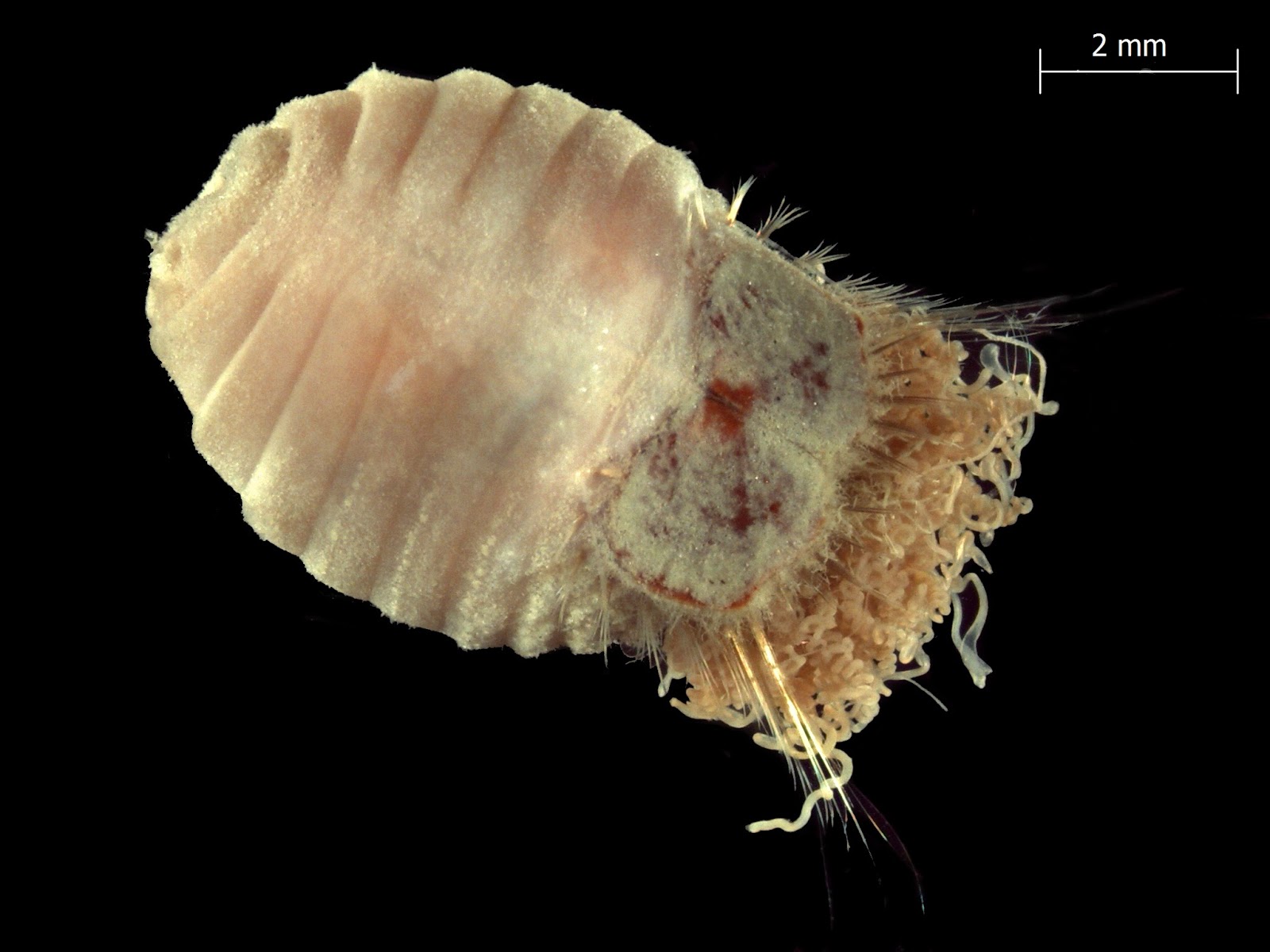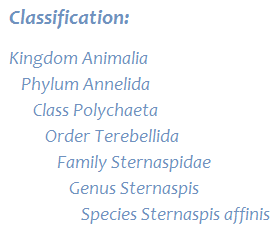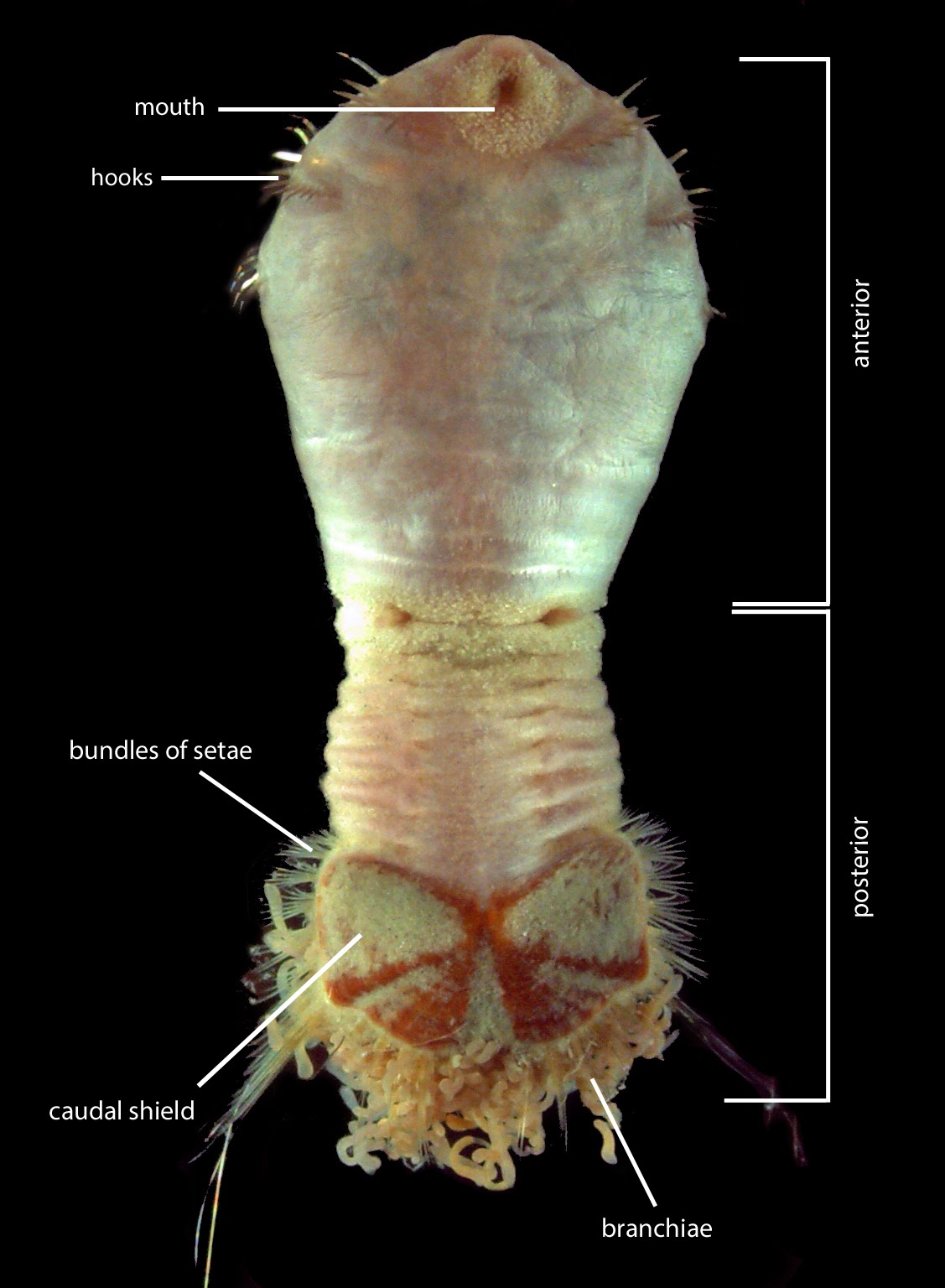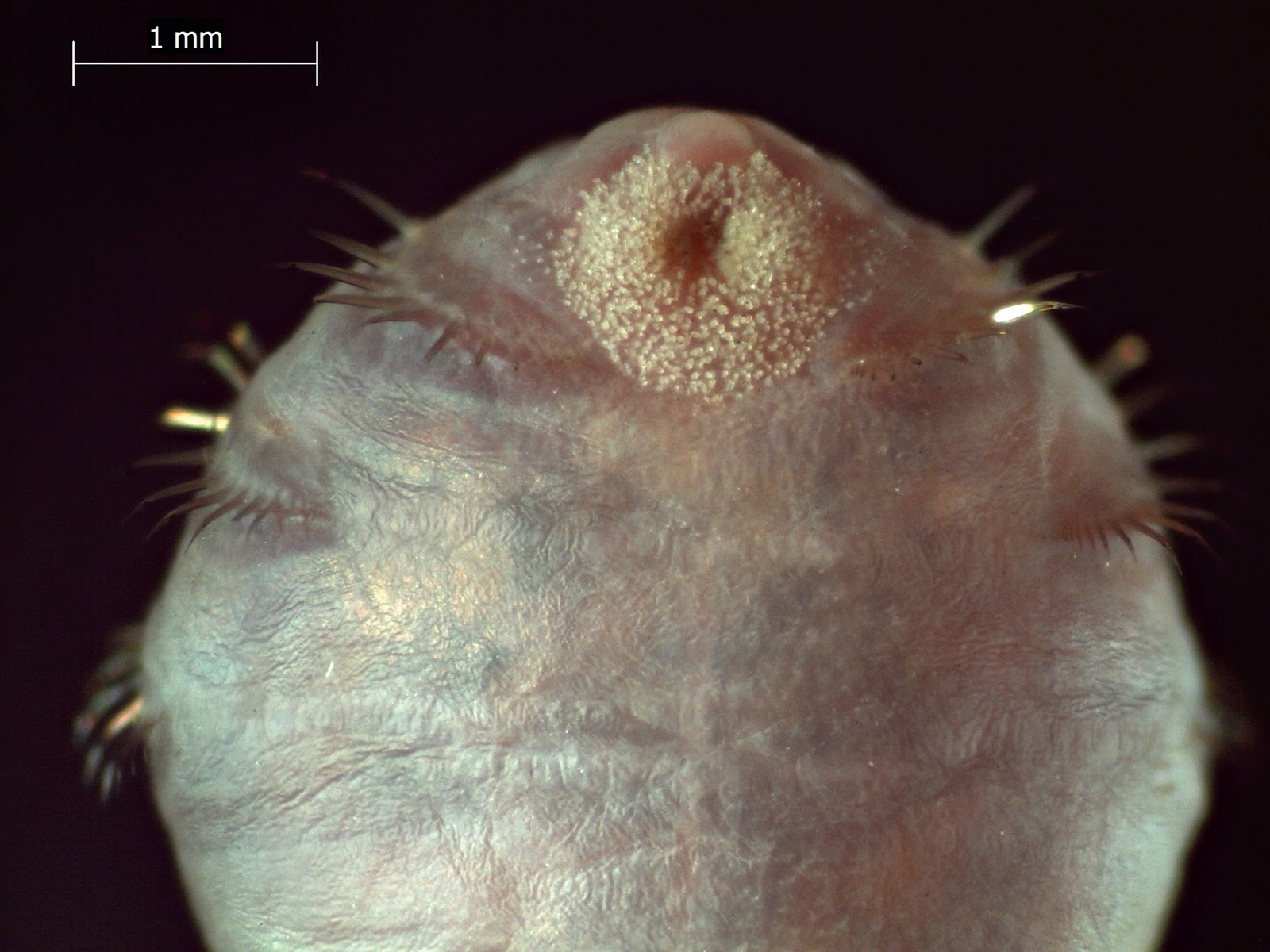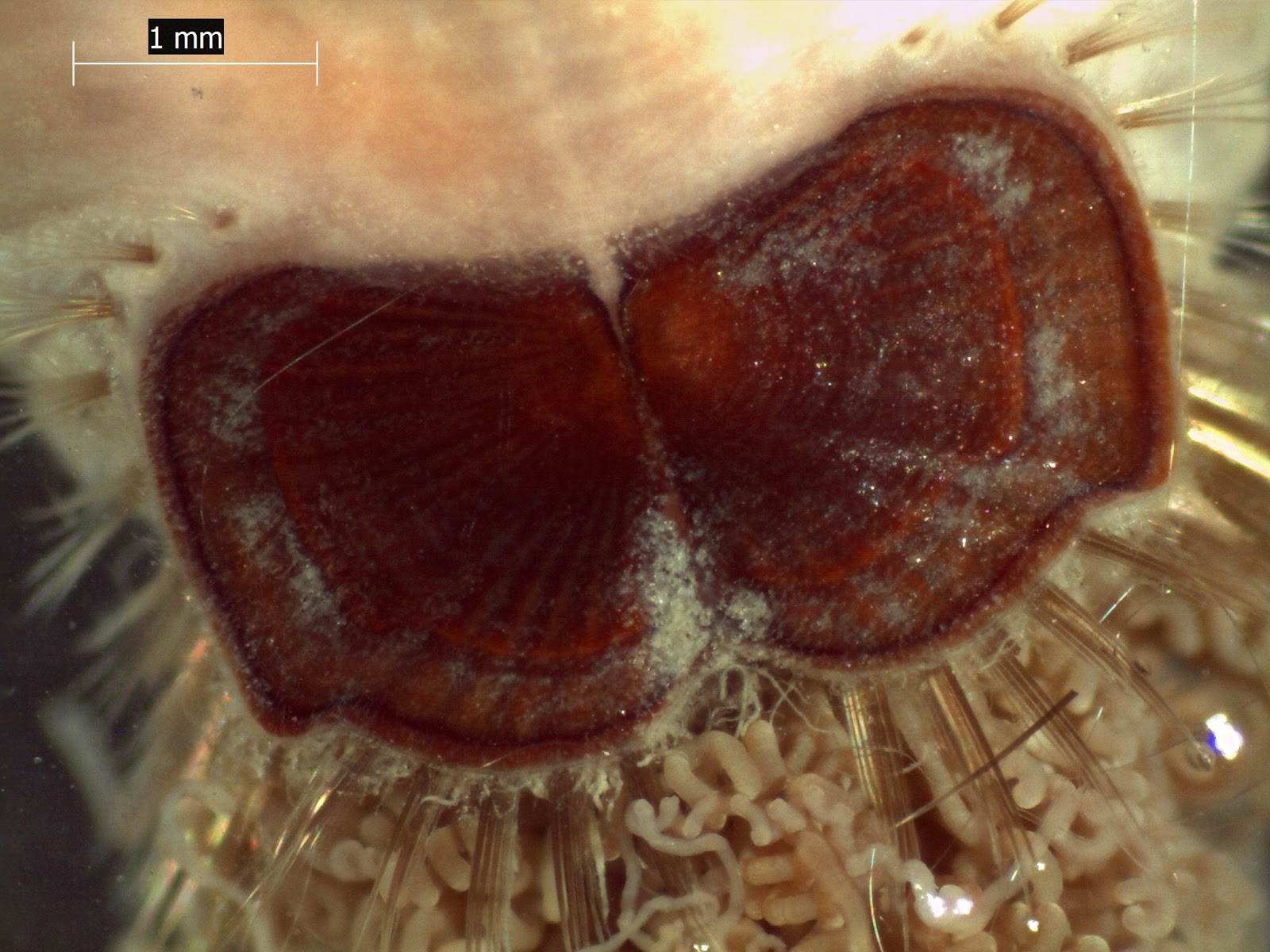Welcome to our first edition of the "Critter of the Month" series. Our taxonomists are excited to shed light on the lives of some of Puget Sound's least known creatures: benthic invertebrates.
Ventral
Benthic invertebrates are tiny animals that live in the mud at the bottom of Puget Sound. "Benthic" comes from the term benthos, which means the community of organisms which live on, in, or near the seabed.
These mysterious benthic invertebrates often resemble something straight out of a science fiction novel based on a planet far away in space, but in reality, they live close to our own backyards.
Call me dumbbell worm, mud owl, or gooseberry worm...just don't call me late for dinner!
Known to scientists as Sternaspis affinis, the dumbbell worm has many names. It has been nicknamed the "mud owl" because of two colorful protective shields, called caudal shields, that cover its gills when its head is buried in the mud searching for tasty edible specks of organic matter. The shields look so much like eyes that scientists thought the worms resembled tiny owls.
The caudal shield and branchiae, or gills, were originally believed to be located at the head end, leading to the genus name Sternaspis, which is Greek for “breast-shield.” The actual head end includes a mouth and rows of thick hooks used for burrowing into the mud, and is completely retractable into the worm’s body. On the rear end, the long gills are exposed to the water column to help them pull oxygen from the water. Sternaspis affinis, whole worm with head extended.
What does it look like?
The dumbbell worm is tiny, ranging from 15 to 20 millimeters long and 5 millimeters wide. It belongs to the class Polychaeta, a group of segmented worms within the phylum Annelida. Worms in this class all have tiny bristles along their bodies called chaetae or setae. These bristles help the worms move about in the mud and anchor to hold on to one place.
Other descriptive characteristics include:
- Body grayish to cream-colored, with about 29 segments.
- Some of the body segments have rows of little bumps called "papillae."
- Caudal shield with radiating ribs and concentric lines and five bundles of bristles on each side of the rear edge.
Where and how does it live?
Close-up of mouth and hooks
The dumbbell worm can be found living anywhere along the west coast of North America from Alaska to the Gulf of California. Although there are 32 different species living across the world in the same family as the dumbbell worm, Sternapsis affinis is the only species that occurs in Puget Sound.
This little critter gets its nutrition by eating tiny particles of organic matter in the soft sediment on the sea floor. In order to do this, it spends most of its day upside-down with its head buried in the mud. You’ve heard the term, “like an ostrich with its head stuck in the sand,” but we'll bet you’ve never heard of a worm that eats with its head stuck in the sand!
Close-up of caudal shield, which resembles owl eyes
Eating all day with your face buried in the mud can be a dangerous feeding strategy, since part of your body is left vulnerable above the sediment surface.
The dumbell worm has a smart way of protecting itself from becoming another creature's snack: it covers the opening of its burrow with its caudal shields, in a defense mechanism called phragmosis. Made from a tough flexible material called chitin, the caudal shields protect the worm's exposed rear end.
Critter of the month
Our taxonomists, Dany and Angela, are going to be sharing their discoveries by bringing us a Benthic Critter of the Month. Dany and Angela are scientists that work for the Marine Sediment Monitoring Program. These posts will give you a peek into the life of Puget Sound’s least known inhabitants.
In each issue we will highlight one of the Sound’s many fascinating invertebrates. We’ll share details on identification, habitat, life history and the role this critter plays in their sediment community! Can't get enough benthos? See photos from our Eyes Under Puget Sound collection on Flickr.


